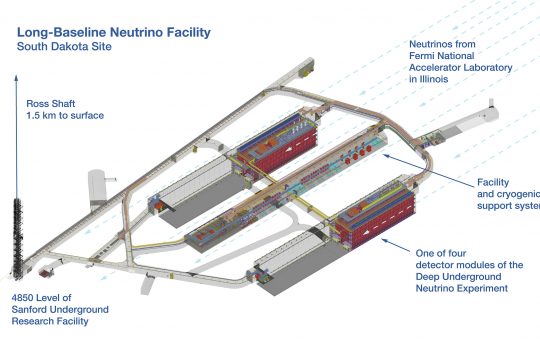Upgrades to Ross Shaft include new cage, skips and rope replacement
- construction
- Deep Underground Neutrino Experiment
- DUNE
- LBNF
- Long-Baseline Neutrino Facility
- Sanford Lab
- Sanford Underground Research Facility
- South Dakota
From Sanford Underground Research Facility, Nov. 24, 2020: Another series of upgrades to the Ross Shaft is underway at the Sanford Underground Research Facility. Crews are working to outfit the shaft with new cage and skip conveyances and have replaced thousands of feet of hoist cables. The work prepares the Ross Shaft for its role as the main travel way for upcoming excavation and construction of the Long-Baseline Neutrino Facility to support the Deep Underground Neutrino Experiment, the world’s flagship neutrino experiment, which is hosted by Fermilab.


